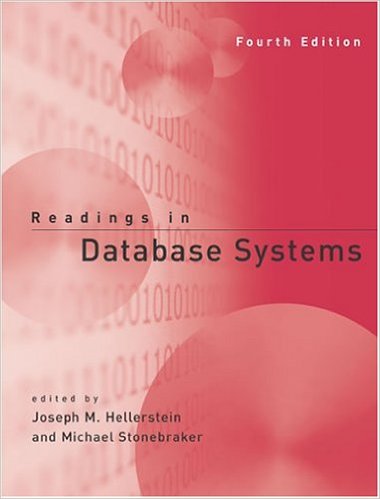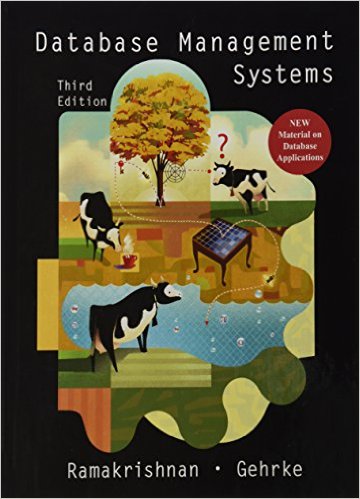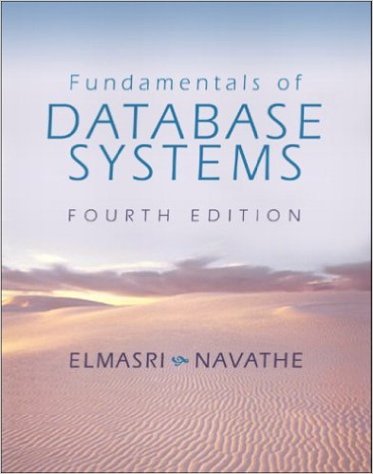Best Database books
1-Database System Concepts 6th Edition1-Database System Concepts 6th Edition1-Database System Concepts 6th Edition

Database System Concepts by Silberschatz, Korth and Sudarshan is now in its 6th edition and is one of the cornerstone texts of database education. It presents the fundamental concepts of database management in an intuitive manner geared toward allowing students to begin working with databases as quickly as possible.
The text is designed for a first course in databases at the junior/senior undergraduate level or the first year graduate level. It also contains additional material that can be used as supplements or as introductory material for an advanced course. Because the authors present concepts as intuitive descriptions, a familiarity with basic data structures, computer organization, and a high-level programming language are the only prerequisites. Important theoretical results are covered, but formal proofs are omitted. In place of proofs, figures and examples are used to suggest why a result is true.
https://www.amazon.com/Database-System-Concepts-Abraham-Silberschatz/dp/0073523321/
2-Readings in Database Systems (MIT Press)

Lessons from database research have been applied in academic fields ranging from bioinformatics to next-generation Internet architecture and in industrial uses including Web-based e-commerce and search engines. The core ideas in the field have become increasingly influential. This text provides both students and professionals with a grounding in database research and a technical context for understanding recent innovations in the field. The readings included treat the most important issues in the database area -- the basic material for any DBMS professional.This fourth edition has been substantially updated and revised, with 21 of the 48 papers new to the edition, four of them published for the first time. Many of the sections have been newly organized, and each section includes a new or substantially revised introduction that discusses the context, motivation, and controversies in a particular area, placing it in the broader perspective of database research. Two introductory articles, never before published, provide an organized, current introduction to basic knowledge of the field; one discusses the history of data models and query languages and the other offers an architectural overview of a database system. The remaining articles range from the classical literature on database research to treatments of current hot topics, including a paper on search engine architecture and a paper on application servers, both written expressly for this edition. The result is a collection of papers that are seminal and also accessible to a reader who has a basic familiarity with database systems.
https://www.amazon.com/Readings-Database-Systems-Joseph-Hellerstein/dp/0262693143
3-Database Management Systems

Database Management Systems provides comprehensive and up-to-date coverage of the fundamentals of database systems. Coherent explanations and practical examples have made this one of the leading texts in the field. The third edition continues in this tradition, enhancing it with more practical material.
The new edition has been reorganized to allow more flexibi
lity in the way the course is taught. Now, instructors can easily choose whether they would like to teach a course which emphasizes database application development or a course that emphasizes database systems issues. New overview chapters at the beginning of parts make it possible to skip other chapters in the part if you don't want the detail.
More applications and examples have been added throughout the book, including SQL and Oracle examples. The applied flavor is further enhanced by the two new database applications chapters.
https://www.amazon.com/Database-Management-Systems-3rd-Edition/dp/0072465638/
4-Fundamentals of Database Systems
Fundamentals of Database Systems has become the world-wide leading textbook because it combines clear explanations of theory and design, broad coverage of models and real systems, and excellent examples with up-to-date introductions and modern database technologies. This book has been revised and updated to reflect the latest trends in technological and application development. This fourth edition expands on many of the most popular database topics, including SQL, security, and data mining along with an introduction to UML modeling and an entirely new chapter on XML and Internet databases.
https://www.amazon.com/dp/0321122267/?tag=stackoverfl08-20
5-An Introduction to Database Systems

The Seventh Edition continues to focus on the hallmark feature of its previous editions: providing a solid grounding in the foundations of database technology and shedding some light on how the field is likely to develop in the future. This comprehensive introduction to databases has been thoroughly revised to reflect the latest developments and advances in the field of database systems. Emphasizing insight and understanding rather than formalism, Chris Date has divided the book into six parts: Basic Concepts, The Relational Model, Database Design, Transaction Management, Further Topics, and Object and Object/Relational Databases. Throughout the book, there are numerous worked examples and exercises for the reader--with selected answers--as well as an extensive set of annotated references. The release of this new edition of An Introduction to Database Systems coincides with the 25th Anniversary of its initial publication.
6-Database Systems: Design, Implementation, & Management 11th Edition

Practical and easy to understand, DATABASE SYSTEMS: DESIGN, IMPLEMENTATION, AND MANAGEMENT, Eleventh Edition, gives students a solid foundation in database design and implementation. Filled with visual aids such as diagrams, illustrations, and tables, this market-leading text provides in-depth coverage of database design, demonstrating that the key to successful database implementation is in proper design of databases to fit within a larger strategic view of the data environment. Renowned for its clear, straightforward writing style, this text provides students with an outstanding balance of theory and practice. The eleventh edition has been updated to include expanded relational algebra coverage, updated business vignettes showing the impact of database tech in the real world, updated coverage of cloud data services, expanded coverage of Big Data and related Hadoop technologies, SQL coverage expanded to include MySQL databases, and many other improvements! In addition, new review questions, problem sets, and cases have been added throughout the book so that students have multiple opportunities to test their understanding and develop real and useful design skills.

